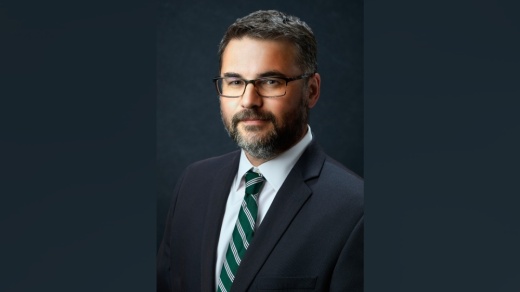Why was the transportation and capital improvement department created?
The department was created to really focus and provide a greater emphasis on transportation and capital improvements. Transportation has been one of the items and community needs that has been coming up as our community continues to grow. We've been getting a number of transportation projects funded through the Alamo Area Metropolitan Planning Organization, and that was all included as part of the public works department and working with the city manager's office.
It was determined that it needed to be kind of its own department and really a focus area, versus it being kind of intermixed with other duties of public works. In addition, a lot of it is involved with our capital programs division that actually delivers the projects, so we want to make sure that we have a seamless process when it comes to project development, project planning, and then project delivery.
What led to you taking on the role of director?
My background is in transportation as a transportation engineer and traffic engineer. I started as New Braunfels' first traffic engineer and then got promoted to city engineer and then assistant public works director. So my focus has been in transportation, but it was decided upon about nine months ago to move the capital programs division under public works. And then that was one of my divisions I managed under public works.
What will be some of the main issues that your team will address?
Right now it's handling a lot of our growth, primarily on our street network, and then also the demands on our transportation network. There's a couple things that we are focusing on as far as our goals, and No. 1 is delivering a couple of key projects that were awarded to us by [the Texas Department of Transportation] and the AAMPO. That includes the Barbarossa Road and Saur Lane roadway improvements extending FM 306 to handle that substantial growth out east of I-35 and along the Hwy. 46 corridor around the New Braunfels Airport.
The other is addressing some of our sidewalk and pedestrian needs here in town, primarily along Common Street around some of the parks.
We also have a Highway Safety Improvement Plan that has identified some key intersections where we have some safety problems that we're looking to approve. Other roadway capacity needs and safety needs is something that our group will be identifying and developing projects that are prepared for funding either through the AAMPO or even preparing for the upcoming 2023 bond.
How do you anticipate working with area entities and the community at large?
Right now we're in the process of developing and maintaining an updated capital improvement plan. And that addresses needs across all departments and in the community as well. So it's not only covering transportation, but it's covering drainage, public safety and economic development.
We are working hand in hand with all city departments to gather a list of projects that have been requested or are identified in our city comprehensive plan.
We just recently sent out a community survey on infrastructure needs that we received over 900 responses, and they covered the same list of project areas.
What we're doing is reviewing and documenting those needs, and then we plan to present that to City Council and then ultimately to our bond advisory committee for potential funding but also for us to really have a project ready to go for other funding opportunities in addition to the future bond or future AAMPO call.
What are some other regional projects you hope to address soon?
The one that keeps coming up, based on community feedback and for city staff, is Common Street from downtown out toward Loop 337 and then from the loop out toward FM 306.
The one inside the loop is the one that we do have funded through the AAMPO for really pedestrian improvements and enhancements. That's critical to connect the library, the fairgrounds and the park. Outside the loop is really needed for additional capacity and traffic operations improvements because that is definitely congested.
Typically, that is just one of the parallel routes that I-35 traffic uses, so that is something that we identified as one of the top priorities for the city's network.
Regionally for us in the state and our regional partners, SH 46 from I-35 out towards I-10 has really been another priority to see what improvements we can do as soon as possible, what are the short-term improvements to address the congestion and then obviously looking at long-term improvements to what that corridor is going to look like 10, 20 even 50 years from now.
One item that has come up recently is our public transportation and how do we improve the service that we have now. So that is something that our department is looking at, and it is going to take more planning work before we really kind of determine what is needed to improve it and then how we implement it.





